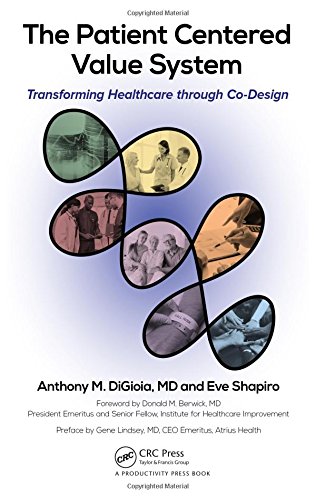

Most ebook files are in PDF format, so you can easily read them using various software such as Foxit Reader or directly on the Google Chrome browser.
Some ebook files are released by publishers in other formats such as .awz, .mobi, .epub, .fb2, etc. You may need to install specific software to read these formats on mobile/PC, such as Calibre.
Please read the tutorial at this link: https://ebookbell.com/faq
We offer FREE conversion to the popular formats you request; however, this may take some time. Therefore, right after payment, please email us, and we will try to provide the service as quickly as possible.
For some exceptional file formats or broken links (if any), please refrain from opening any disputes. Instead, email us first, and we will try to assist within a maximum of 6 hours.
EbookBell Team

0.0
0 reviewsImagine: You are a hospital Chief Executive Officer, Chief Financial Officer, medical or nursing director, patient safety specialist, quality improvement professional, or a doctor or nurse on the front lines of patient care. Every day you’re aware that patients and families should be more engaged in their care so they would fare better both in the hospital and after discharge; their care could be safer and more seamlessly coordinated; patients should be ready for discharge sooner and readmitted less often; your bottom line stronger; your staff more fulfilled. You enter into new payment models such as bundling with an uneasy awareness that your organization is at risk because you don’t know what the care you deliver actually costs.
Like most healthcare leaders, you are also still searching for a way to deliver care that will help you to achieve the Triple Aim: care that leads to improved clinical outcomes, better patient and family care experiences, and reduced costs.
Sound familiar? If so, then it’s time to read The Patient Centered Value System: Transforming Healthcare through Co-Design. This book explains how to introduce the Patient Centered Value System in your organization to go from the current state to the ideal.
The Patient Centered Value System is a three-part approach to co-designing improvements in healthcare delivery―collaborating with patients, families, and frontline providers to design the ideal state of care after listening to their wants and needs. Central to the Patient Centered Value System is seeing every care experience through the eyes of patients and families.
The Patient Centered Value System is a process and performance improvement technique that consists of 1) Shadowing, 2) the Patient and Family Centered Care Methodology, and 3) Time-Driven Activity-Based Costing. Shadowing is the essential tool in the Patient Centered Value System that helps you to see every care experience from the point of view of patients and families and enables you to calculate the true costs of healthcare over the full cycle of care.
Fundamental to the Patient Centered Value System is the building of teams to take you from the currents state of care delivery to the ideal. Healthcare transformation depends not on individual providers working to fix broken systems, but on teams of providers working together while breaking down silos.
The results of using the Patient Centered Value System are patients and families who are actively engaged in their care, which also improves their outcomes; providers who see the care experience from the patient’s and family’s point of view and co-design care delivery as a result; the tight integration of clinical and financial performance; and the realization of the Triple Aim.